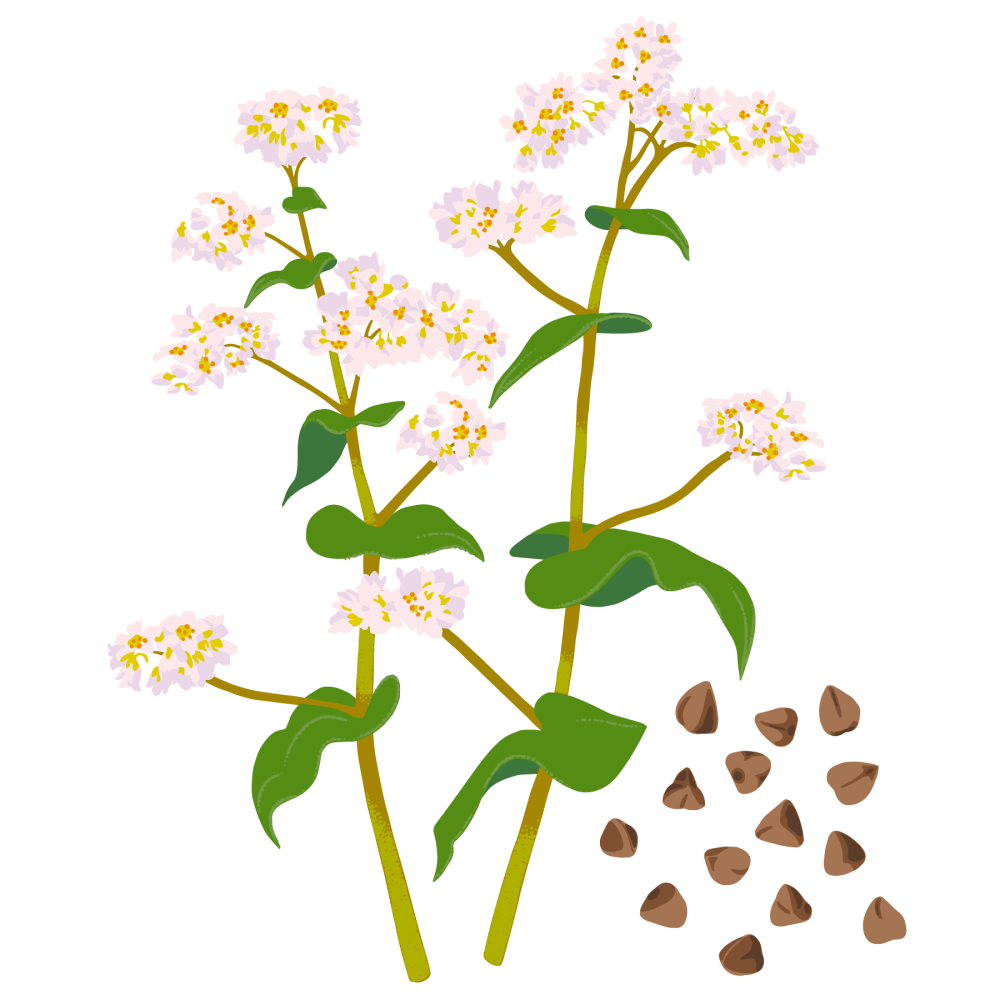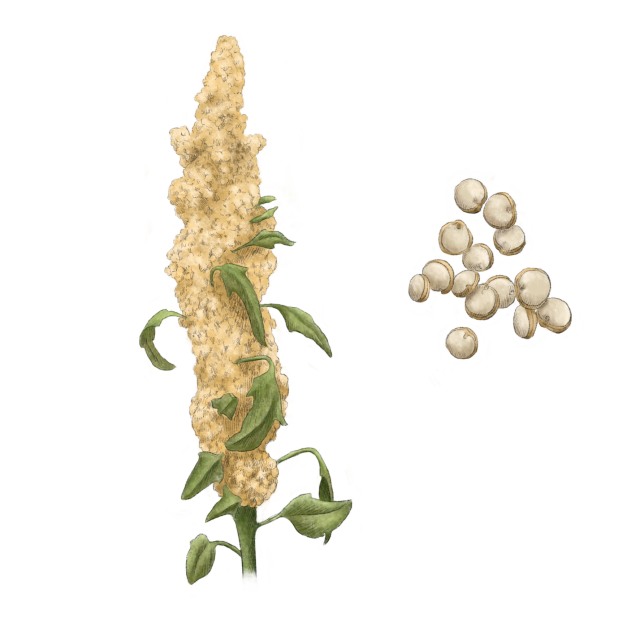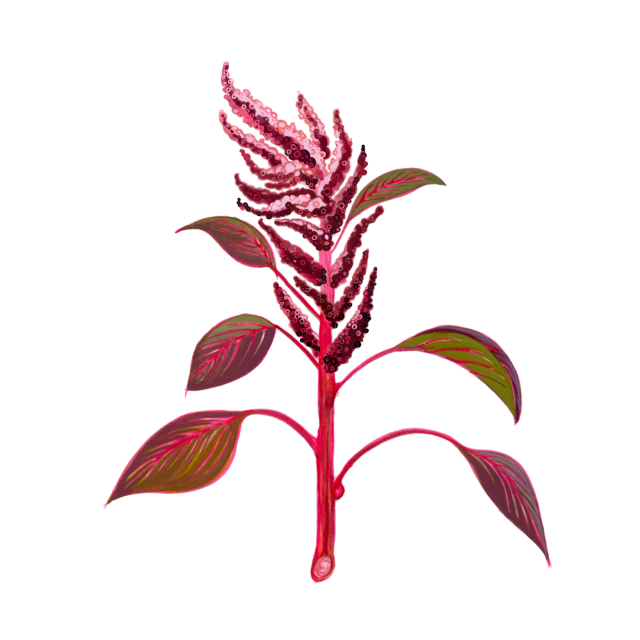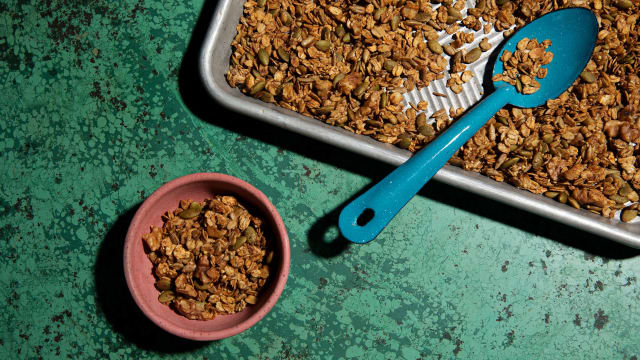Buckwheat

Latin name: Fagopyrum esculentum
Uses: grain, flour, tea, alcohol
What is buckwheat?
Though it has “wheat” in its name, buckwheat is a broadleaf plant that’s unrelated to wheat, which is a grass. Buckwheat is a cousin of rhubarb, sorrel, and knotweed. The starchy, triangular seeds of this fast-growing plant are known as a pseudocereal because they are used as a grain. They contain no gluten.
Why is buckwheat healthy?
Clinical studies have shown that buckwheat can lower inflammation, cholesterol, and blood pressure, and help to prevent diabetes and possibly cancer. Buckwheat also contains phenolic compounds that support liver and brain function and provide excellent digestive support, especially when sprouted. Its nutrient density, antioxidant properties, and high amino acid content make buckwheat especially valuable to plant-based and gluten-free eaters.
What does buckwheat taste like?
Buckwheat has a nutty, complex, slightly astringent flavor thanks to compounds that also impart notes of bitter almond, citrus, strawberry, hay, and whole wheat bread. While the endosperm (inner seed) is white, buckwheat flour can range from buff to grey depending on how much of the greenish-grey seed coat and dark brown or black hull are included in the grind.
How do I use buckwheat?
Buckwheat noodles are common in Tibet, southwestern China, Korea, and Japan, where soba are held in especially high esteem. Italy has a version as well. Roasted buckwheat groat porridge is a staple from Western Asia through Europe. In Ukraine, Russia, and Poland this porridge is known as kasha, and buckwheat flour is used to make small pancakes called blini. In France, galettes au sarrasin are buckwheat crêpes often served with ham, egg, and cheese. Buckwheat honey is very dark, with an almost mineral aroma. The grain is roasted and steeped to make tea in East Asia, where it’s also used to make beer and hard liquor.
What does buckwheat pair well with?
Soba, galettes, and pasta are all savory dishes served with umami-rich ingredients like mushrooms, soy sauce, and cheese, so you should take your cue from those pairings. If you’re tempted to try it in a sweeter context, consider dark chocolate, coffee, citrus, and spices as good places to start.
Where does buckwheat grow?
Buckwheat originated in southwestern China, near the Tibetan plateau, and it was first domesticated there as early as 6,000 BCE. It thrives in poor soils and is sometimes used as “green manure” that’s planted in the fall and plowed under in spring. Today buckwheat is grown widely throughout Europe, Asia, and the New World, though Russia and China together produce more than 75 percent of the world’s crop.
How to buy buckwheat:
Whether grains or flour, it should smell fresh and not musty or stale. Keep it in a jar away from direct sun.
Fun buckwheat fact:
Because it’s not a grain, buckwheat is a permitted food during several Northern Indian religious holidays that involve fasting.





